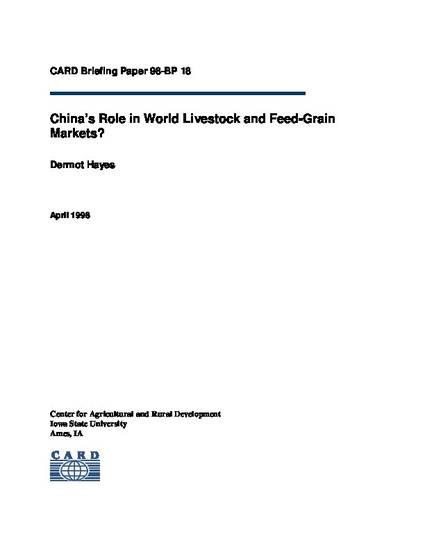
When we look back at trends that shaped u.s. agriculture in the 1990s, economic and dietary changes taking place in China may be among the most important. In the past two decades, China has been transformed from a country that did not meet all of the food needs of its people to one that should be able to provide meat, poultry, dairy products, and even alcohol to a majority of consumers within twenty years. It will have achieved this by allowing markets to work and, hopefully, by utilizing China's comparative advantage. To meet this potential, China will need to change many of the food and trade policies currently in place. If this occurs, the United States will experience a large and sustained growth in agricultural exports and U.S. farmers should temporarily benefit from strong prices. What type of policy changes might take place if China pursues a more open trade policy, and what might these changes mean to U.S. farmers?
Available at: http://works.bepress.com/dermot_hayes/177/

This is an article from Choices, 14 (1999); 25-28. doi: 10.22004/ag.econ.131674. Posted with permission.